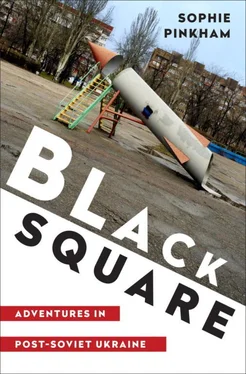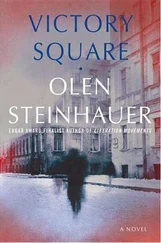The AIDS Conference wasn’t always so inclusive; it started as a strictly scientific event. In 1989 activists from the American group AIDS Coalition to Unleash Power, or ACT UP, pushed their way into the conference, carrying their SILENCE = DEATH posters. ACT UP was famous for its direct actions in the United States, where members were often arrested during acts of civil disobedience. Over the years ACT UP members infiltrated the New York Stock Exchange, chaining themselves to the VIP balcony to protest the price of the only AIDS drug approved for use; marched to the White House carrying the casket of a dead ACT UP leader; and put an enormous condom over Senator Jesse Helms’s house in Arlington, Virginia. At the 1989 AIDS Conference, ACT UP members seized the microphone and presented scientists with a report on the failures of AIDS research. From then on the conference included people with HIV, and scientists and pharmaceutical companies made a show, at least, of consulting with them about research and drug trials.
The research and activism bore fruit, and the world’s first effective HIV treatment was introduced in 1996. People who had been about to die recovered suddenly. For a long time things had moved in only one direction, flesh melting off bodies, skin disfigured by Kaposi’s sarcoma, legs growing too weak to hold the weight of a body, eyes losing the power of sight. And then, suddenly, people started making the journey backward. People who had been in wheelchairs could walk again. The lesions healed, the weight was gained back, and the sick were well again, more or less. (The drugs have many unpleasant side effects.) It’s been called the Lazarus effect.
Perhaps because they have witnessed this triumph over death, achieved through the hard work of humankind, AIDS activist slogans have a Fyodorovian optimism: END AIDS NOW! END AIDS BY 2016! Demands often revolve, like Fyodorov’s theories, around the word universal, one of many indicators that such activists are the heirs to the utopian ideas of the nineteenth and twentieth centuries. Providing universal access to medications that have already been invented is a lot easier than collecting ancestral dust from outer space. And yet it’s unlikely that any of these demands will be met in the next century, let alone in the next decades. AIDS drugs exist, and energetic activism has succeeded in driving down their prices and getting rich governments to contribute to AIDS treatment efforts, but still no one will pay for them to be delivered to every single person with HIV, for the remainder of these people’s lives.
By the time I arrived at my first AIDS Conference, the international AIDS bureaucracy—what Eastern Europeans, with their usual cynicism, call the “AIDS business”—was bloated and pious. Bureaucrats agreed on everything that was vague and euphonious—human rights, equality, universal access, a fight against all kinds of “stigma and discrimination”—and yet national governments continued not to pay for medicine or prevention programs, and to punish drug users and sex workers and gays. Angry activists, some of them veterans and some of them younger people inspired by the example of the first generation of AIDS activists, seemed almost quaint in their anger. During one session I attended, in a cold, sepulchral room, representatives of pharmaceutical companies were speaking when, in their matching T-shirts, ACT UP members filed onto the stage, chanting about price reductions for an AIDS drug. They were right, of course, that the drug ought to be cheaper, and ACT UP did win important victories from time to time. But storming the stage was no longer a shocking disruption, as it had been in the 1980s. Now it was a scheduled event, part of the agenda. As the protesters shouted, the speakers sat patiently, looking irritated. They were used to this process. The audience, too, looked unimpressed, though the protest was more interesting than the session had been. It ended soon enough, just as everyone had known it would. In the 1980s ACT UP had turned anger into action, harnessing it to accelerate research and change policies. But by the time I arrived on the scene, anger had been assigned its place in the bureaucracy.
My most important task at the AIDS Conference was to help Sasha, an HIV-positive Russian AIDS activist in her late twenties, to write a keynote speech. Sasha was attractive without being beautiful, with a straight nose, crooked teeth stained by tobacco, golden-brown hair cut into an awkward mullet, and large, expressive green eyes. Just out of rehab, she had the edginess of a person unaccustomed to sobriety.
Sasha had been diagnosed with HIV when she was only twenty-two, after sharing needles with her boyfriend. The staff at the clinic gathered around her, staring at her, as she later told a journalist, as if she were some mysterious beast. The doctor said, “That’s it, girl, you’re HIV positive, go where you like.” She didn’t find out about HIV treatment until three years later.
Hospitalized with HIV-related complications, Sasha found that no one was helping the young, dying AIDS patients around her. She and some other HIV-positive activists started an organization to provide palliative care in St. Petersburg’s infectious disease hospitals. Drawing on her training as a psychologist, she helped teach Russian doctors and nurses how to talk to their patients about death—although there was no reason they had to die, from a medical perspective. HIV drugs were easily in reach for the oil-rich Russian government. And yet Russia didn’t care to exercise its power to conquer death. Committees of doctors decided who was eligible for state-sponsored treatment and who wasn’t—who would be resurrected, and who would be left to die. HIV treatment cost twelve thousand dollars a year, more than almost anyone in Russia could afford. In 2004 there were five hundred people receiving government-funded HIV treatment, and a million on the waiting list.
Sasha was always dressed in the same uniform: jeans, Converse sneakers, and the T-shirt of her organization, FrontAIDS. The logo had a man waving a red banner that formed an AIDS ribbon. Under FrontAIDS was written a slogan, in Russian: WE WILL LIVE—THAT IS OUR POLICY!
FrontAIDS was a radical protest group formed by Sasha and her fellow activists, some of them anarchists or eco-activists (the sorts of people who would later form Pussy Riot). Like their American counterparts, FrontAIDS held disruptive actions with a high risk of punishment. For them, too, silence equaled death. No one would rescue them; they would survive only if they were ready to fight. Once, demanding treatment for HIV-positive prisoners, they handcuffed themselves to the Ministry of Justice in Moscow, chanting “A prison sentence is not a death sentence.” In St. Petersburg, activists carried empty red coffins to City Hall. Just behind a large statue of Lenin pointing the way to the future, the activists draped the facade of the building in a banner that said OUR DEATHS, YOUR SHAME. FrontAIDS activists were conscious inheritors of the ACT UP legacy, but they were also the heirs to the 1917 revolution.
Many of the FrontAIDS activists protested with masks on; public exposure as HIV-positive people and as drug users could lead to firing, ostracism, and police harassment. But Sasha decided that masks only made it easier for the public to treat HIV-positive people as frightening and alien. In 2005 she agreed to have her face and her story used for an anti-AIDS campaign, making her one of the first Russians to publicly admit to having the virus.
IN TORONTO, the conference sponsors had paid for a nice hotel room for Sasha. She was letting two other AIDS activists stay with her: a Russian man, Aleksandr, and an American who had been living in Russia for many years and was the kind of earnest, hard-working expat woman who, I found, often propped up NGOs in countries without much history of civic engagement. They all slept in Sasha’s king-size bed. Aleksandr, a tall, obese, bearded man in his late twenties, had traded his FrontAIDS shirt for an African dashiki that squeezed his pasty flesh.
Читать дальше












